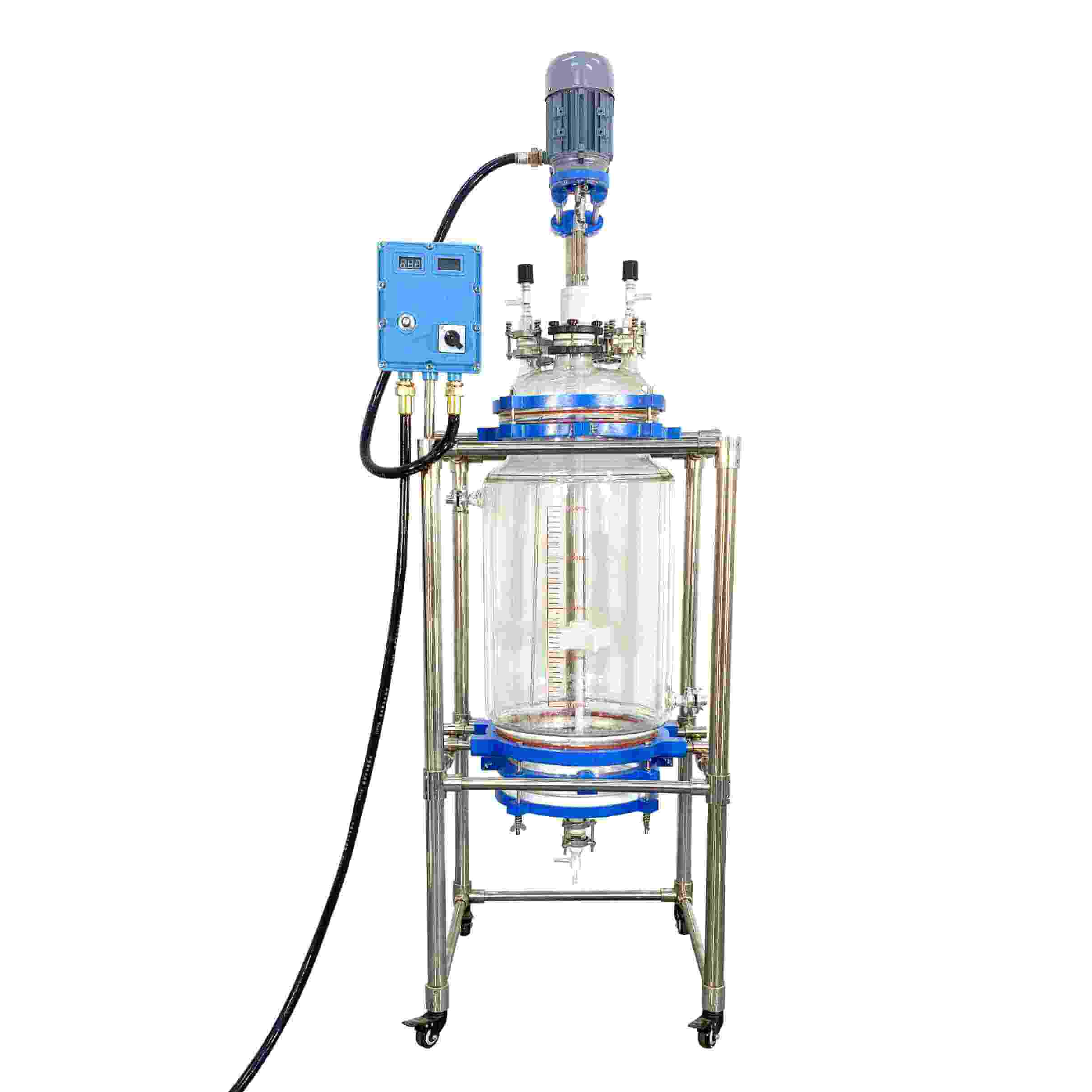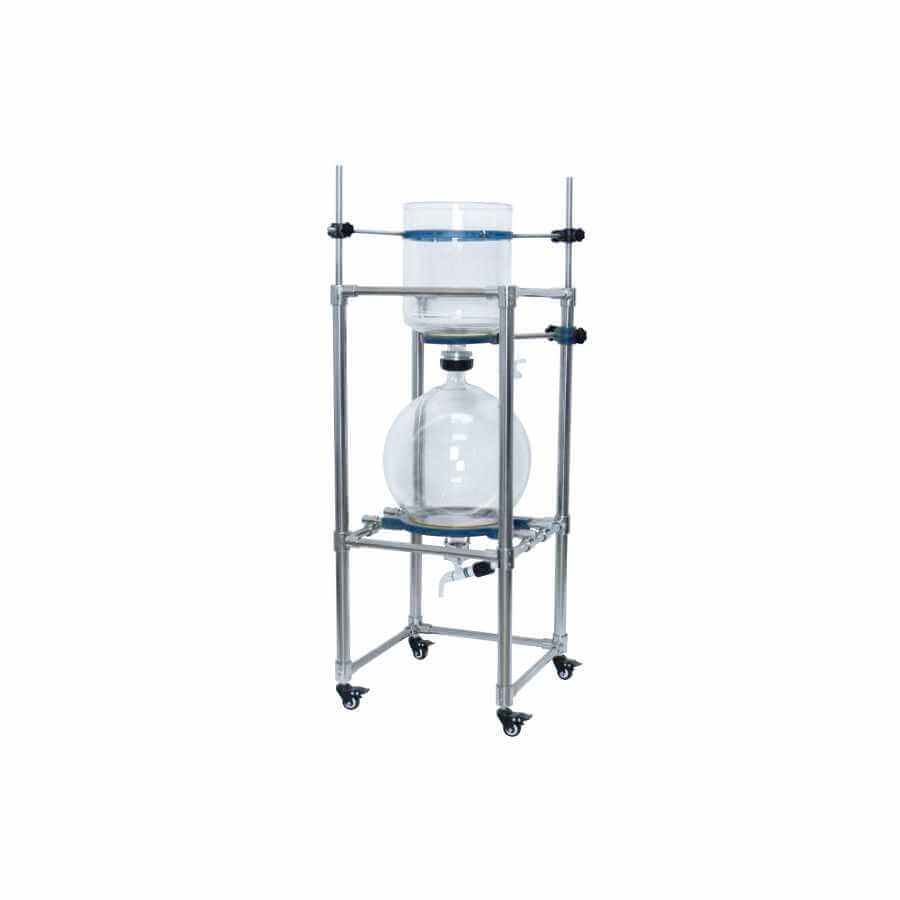

Glass Reactor
Glass reactors: used in chemical reactions, drug research and development, fine chemicals, food manufacturing, and other fields.
Material
glass
Capacity (L)
10-10000+
Mixing system
anchor, paddle, frame and others
Heating system
electric heating, oil heating and others
RUNGYU glass reactors are commonly used biochemical instruments and are widely used in modern fine chemicals, biopharmaceuticals, scientific research and experiments, and other industries. They can be used for concentration, distillation, reflux, separation, and purification reactions under the conditions of constant speed, constant force, and constant temperature. It is an ideal equipment for teaching, experiment, pilot test, and production.
Request a quoteThe glass reactor can mainly complete the preset reaction steps in a highly automated manner from the initial feed to the reaction discharge, and strictly control important parameters such as temperature, pressure, machinery (stirring, sandblasting, etc.), reactant/product concentration, etc. Supervision.
The glass reactor mainly uses its characteristics to place the reaction materials (also called reaction solvent) in the middle layer, and stirs the reaction under normal pressure or negative pressure to make the medium in the glass reactor layer (such as refrigerant liquid, heating Water or heating oil, etc.) is heated or cooled with stirring to perform a cyclic reaction. It is an ideal device for synthesis experiments of new biochemical materials.

The structure of a glass reactor generally consists of a kettle body, a transmission device, a stirring device, a heating device, a cooling device, a sealing device, etc. It can be combined with some corresponding auxiliary equipment to form a complete production line, including the fractionating tower, condenser, water separator, collection tank, filter, etc.
Precautions for glass reactor
1. Check whether all the inlet and outlet valves of the glass reactor are intact; check whether the flange and base bolts are loose and whether the safety shield is intact and reliable;
2. Check whether the glass reactor body is cracked, deformed, bulging, perforated, corroded, leaked, etc., whether the insulation, paint, etc. are complete, and whether they are peeled off or burned;
3. Always listen to the glass reactor for abnormal vibration and noise;
4. Listen to whether the sound of the reducer and motor is normal, and touch the operating temperature of the reducer, motor, base bearing, and other components: the general temperature is ≤40°C, the maximum temperature is ≤60°C (the back of the hand can stay for more than 8 seconds); it is normal);
5. Frequently check whether there is oil leakage in the glass reactor reducer, whether the shaft seal is intact, check the oil level and oil quality changes in the reducer, and add or update the corresponding oil if necessary;
6. Check whether the safety valves, explosion-proof discs, pressure gauges, thermometers, and other safety devices of the glass reactor are accurate, sensitive, and easy to use. Check whether the safety valve and pressure gauge have been calibrated, whether the seal is in good condition, whether the red line of the pressure gauge is correctly drawn, and whether the explosion-proof valve disc is leaking.
7. Keep the mixing shaft clean and illuminated, and check whether the rotation direction of the mixing shaft is clockwise. Reverse rotation is strictly prohibited;
8. Keep the glass reactor clean.
Advantages of glass reactor
1. Because the material used in the glass reactor (G3.3 borosilicate glass) has excellent material and chemical properties. During the mixing process of variable frequency speed regulation, the operation will be relatively stable, and no sparks will be generated even if the torque is large.
2. The glass reactor components are sealed with tetrafluoroethylene, which can maintain a good vacuum degree among similar products (generally around -0.095mpa) and maintain high-precision sealing under working conditions. There is also a chip collection chute.
3. Alloy steel mechanical seal and PTFE connection port maintain high-precision sealing under working conditions.
4.Pt100 sensor probe, with high-temperature measurement accuracy and small error, which effectively improves work efficiency.
5. PTFE discharge valve, movable interface, rapid discharge.
6. After the reaction is completed, the cooling or heating solution in the interlayer of the glass reactor can be accumulated without liquid accumulation.
7. The overall stainless steel column movable frame structure, five glass reactor lids, equipped with a full set of glass for reflux, liquid addition, temperature measurement, etc.
8. Strong torque and no noise. Adopt Japanese technology AC gear motor.
9. The double PTFE stirring paddle of the glass reactor is suitable for mixing low to high-viscosity liquids.




